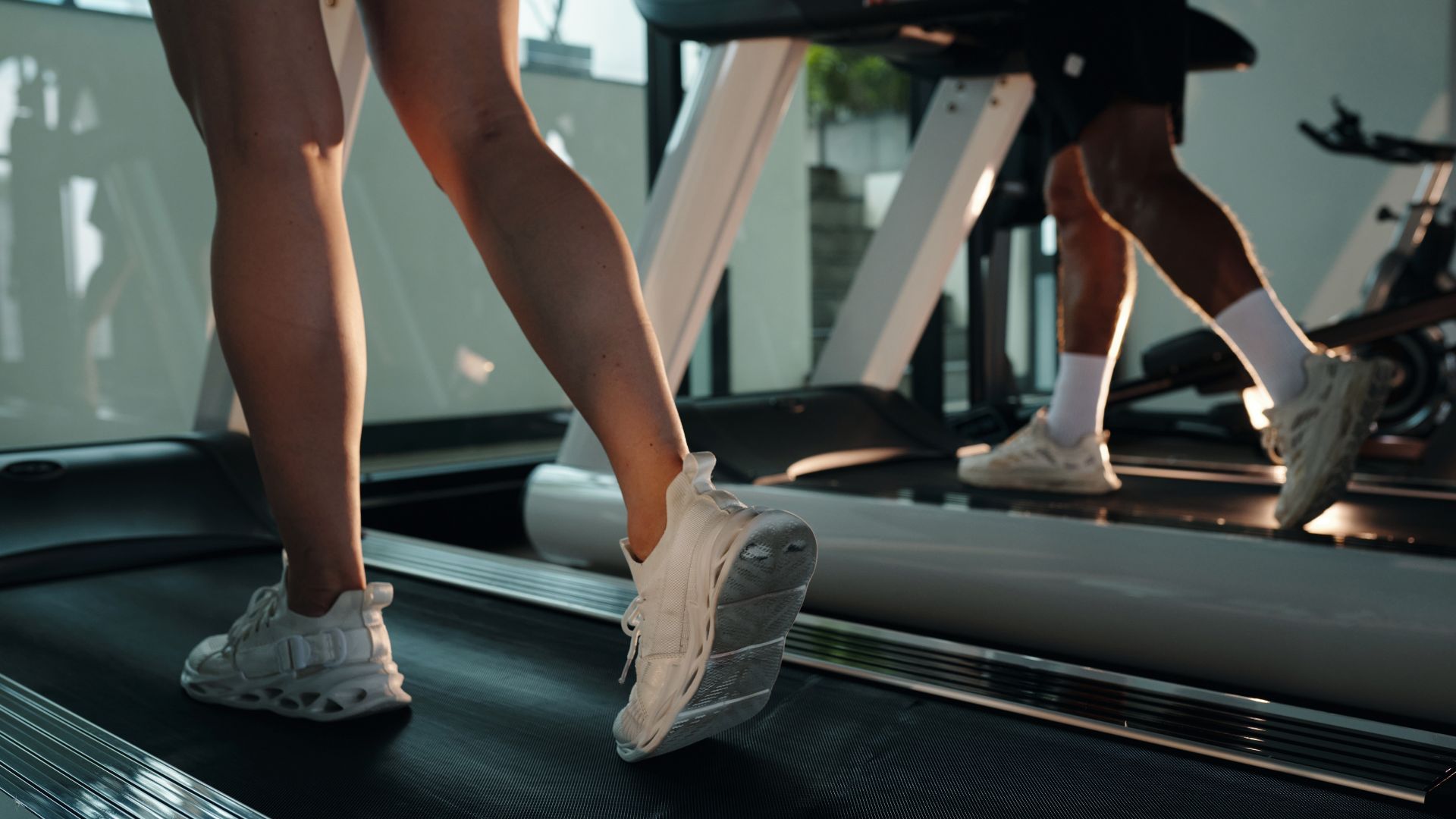Not a fan of running? I tried Japanese walking intervals as a low-impact way to build fitness quickly
Japanese walking intervals combine periods of faster walking with rest, every three minutes, making it a great workout to boost your fitness


Whether you want to improve your cardiovascular health or get into a sport like running, these so-called Japanese walking intervals can be a valuable tool. The combined periods of harder effort and rest in this workout challenge the body, pushing you to work for the benefits while not completely tiring you out.
We're sceptical of fitness trends here at woman&home, but this is one I can get on board with. It can be done anywhere - outside in the fresh air as a walking workout, on the treadmill, alongside another exercise like strength training, or on its own. Plus, the evidence shows that it can dramatically boost cardiovascular fitness in less than six months, making it one of the best exercises for longevity.
The experts agree it's worth trying, too. "Japanese interval walking perfectly embodies the principle I teach my clients - sustainable consistency beats extreme intensity," says Rachael Sacerdoti, a certified personal trainer and women's health specialist. Want to give it a go? Here's everything you need to try this workout for yourself.
What are Japanese walking intervals?
Interval walking training (IWT) is a workout method developed by Japanese scientists to help people improve their cardiovascular health. Unlike high-intensity interval training (HIIT), this is a low-impact method.
Here's how to do it, according to the original study:
- 3 minutes of fast walking (roughly 70% of peak aerobic capacity, i.e. maximum heart rate)
- 3 minutes of slow walking (40% of peak aerobic capacity)
- Repeat five times at a minimum, or for 30 minutes
- Do the workout five days a week
Japanese walking intervals, as they've come to be known in the UK and US, came to be following this study, published in the Mayo Clinical Proceedings.
200 adults, with an average age of 63, were recruited for the research. Separated into two groups, IWT and traditional "continuous" walking, the scientists found that the IWT group had improved in a whole range of health markers, including blood pressure, blood glucose, BMI, aerobic capacity, and strength, compared to the group that walked at a continuous pace.
Sign up to our free daily email for the latest royal and entertainment news, interesting opinion, expert advice on styling and beauty trends, and no-nonsense guides to the health and wellness questions you want answered.
As noted, you don't have to do this workout in a particular way. It could be part of your early morning walk, a warm-up in the gym, or as a dedicated treadmill workout, making it one of the most versatile exercise types around.
What are the benefits of Japanese walking intervals?
1. Boosts cardiovascular health
The original study found that participants had significantly improved their aerobic capacity after the interval training program, a key sign of improved cardiovascular fitness.
How to work out your maximum heart rate
To work out your maximum heart rate, you have to do the following calculation:
220 minus your age
For example, if you're 45, your maximum heart rate will be 175.
70% (your fast walking pace) would give you an approximate heart rate of 122.
40% (your slower pace) would give you an approximate heart rate of 70.
To work this out, you can use the heart rate monitor on the treadmill at the gym, or with one of the best fitness trackers, which may be more reliable.
"The beauty of interval walking lies in how it trains your heart to recover quickly between efforts," explains Sacerdoti. "During the fast intervals, your heart rate elevates to improve cardiovascular capacity, while the recovery periods train your body to return to baseline efficiently. This creates 'cardiac flexibility', where the heart becomes stronger at both working hard and recovering fast."
As recently as last year, another review of IWT found the health benefits to be "well established" in otherwise healthy middle- and older-aged people, and those with metabolic diseases.
2. Improves strength
While weighted workouts have their own benefits for women, Japanese walking intervals may be the way forward to get a stronger lower body if you're short on time or equipment.
The study showed that the interval training could protect against "decreases in thigh muscle strength", suggesting that the method did the reverse, increasing or helping to maintain lower-body strength.
For women, menopause symptoms also come with a higher risk of osteoporosis and muscle loss, thanks to the decline in oestrogen. This method could be one way to help prevent that.
3. It's sustainable
Importantly, research shows that Japanese walking intervals are a sustainable way to improve fitness. It's not a fad. The workout only involves walking 30 minutes a day, and you only have to do it five days a week at most, so most people will find they have the time for it.
Years after the original study, an analysis found that 95% of participants followed the method for the duration of the study (5 months), which is impressive.
4. Can help with weight loss
If you're looking to lose weight healthily, Japanese walking intervals can help. The method crates something called EPOC (excess post-exercise oxygen consumption), says Sacerdoti.
"This is more commonly known as the 'afterburn effect'. Your metabolism remains elevated for hours after you finish walking, continuing to burn calories at a higher rate," she says.
"The alternating intensities also improve your body's ability to switch between burning carbohydrates during the fast intervals and fat during the recovery periods. This metabolic flexibility is necessary for achieving and maintaining sustainable weight management."

I tried Japanese walking intervals for myself
I'm always looking for an alternative way to boost my fitness and get more steps in, so I took the Japanese walking intervals in my stride. Taking to my gym's treadmill, I set the incline to 1.5 (which mirrors the elevation of outdoor terrain) and started walking at a 6.5 level.
After three minutes, I took this down to a 4. I didn't feel too out of breath, but I felt like I'd been walking at a good intensity for a few minutes.
One benefit I found of these intervals on a treadmill vs outdoors was that I couldn't slow down without realising. The tread made me keep a good pace for the full three minutes, and although I had my Coros Pace 3 on my wrist the whole time, I didn't have to keep looking down at it to make sure I was staying at the right pace. But, I did miss the sunshine outdoors.
Overall, I managed to do five rounds of the workout, which is what the researchers suggest. It took me 30 minutes and 12 seconds. By the end, I was using my arms more to walk, which showed me it was a real challenge.
Would I do it as part of my regular workout routine? Maybe. I have to admit I did get a little bored towards the end, and I'd probably only include the workout in my week again if I were to do it outdoors, where I'd also be able to reap the benefits of the fresh air. However, for an alternative way to get in more high-to-moderate intensity exercise, I'd recommend it to anyone.
How often should I do the workout?
The researchers found the benefits after participants did the workout five days a week, at least 5 times or for 30 minutes. However, if you're new to exercise or coming back after a break, you might find this too much of a challenge to start.
Stick to what you feel comfortable with and be sure to take rest days, says Sacerdoti. This is not a method to use for walking every day. "Your body needs 48 to 72 hours to fully recover from the metabolic stress of interval training, and pushing beyond this can lead to diminishing returns or even regression," she explains.
Is 30 minutes enough walking exercise?
Yes, another great thing about Japanese walking intervals is that they are NHS approved, in a roundabout way. The health body recommends 150 minutes of moderate-intensity exercise or 75 minutes of vigorous-intensity exercise, spread out over at least three days a week or every day.
If you combined this workout with resistance training, like Pilates with weights or traditional training with dumbbells, you'd be doing more than enough to reap the health benefits of exercise every week.
"This type of interval walking is fantastic, but it's not a complete solution on its own. To maximise your results, you need to address what interval walking doesn't cover - strength training and mobility work," says Sacerdoti.
"I recommend incorporating strength training at least three times a week, as your muscles need resistance to maintain and build mass, especially as you age. Compound movements like squats, deadlifts, and rows are ideal as they complement the lower body endurance you're building."

Grace Walsh is woman&home's Health Channel Editor, working across the areas of fitness, nutrition, sleep, mental health, relationships, and sex. She is also a qualified fitness instructor. In 2025, she will be taking on her third marathon in Brighton, completing her first ultra marathon, and qualifying as a certified personal trainer and nutrition coach.
A digital journalist with over seven years experience as a writer and editor for UK publications, Grace has covered (almost) everything in the world of health and wellbeing with bylines in Cosmopolitan, Red, The i Paper, GoodtoKnow, and more.